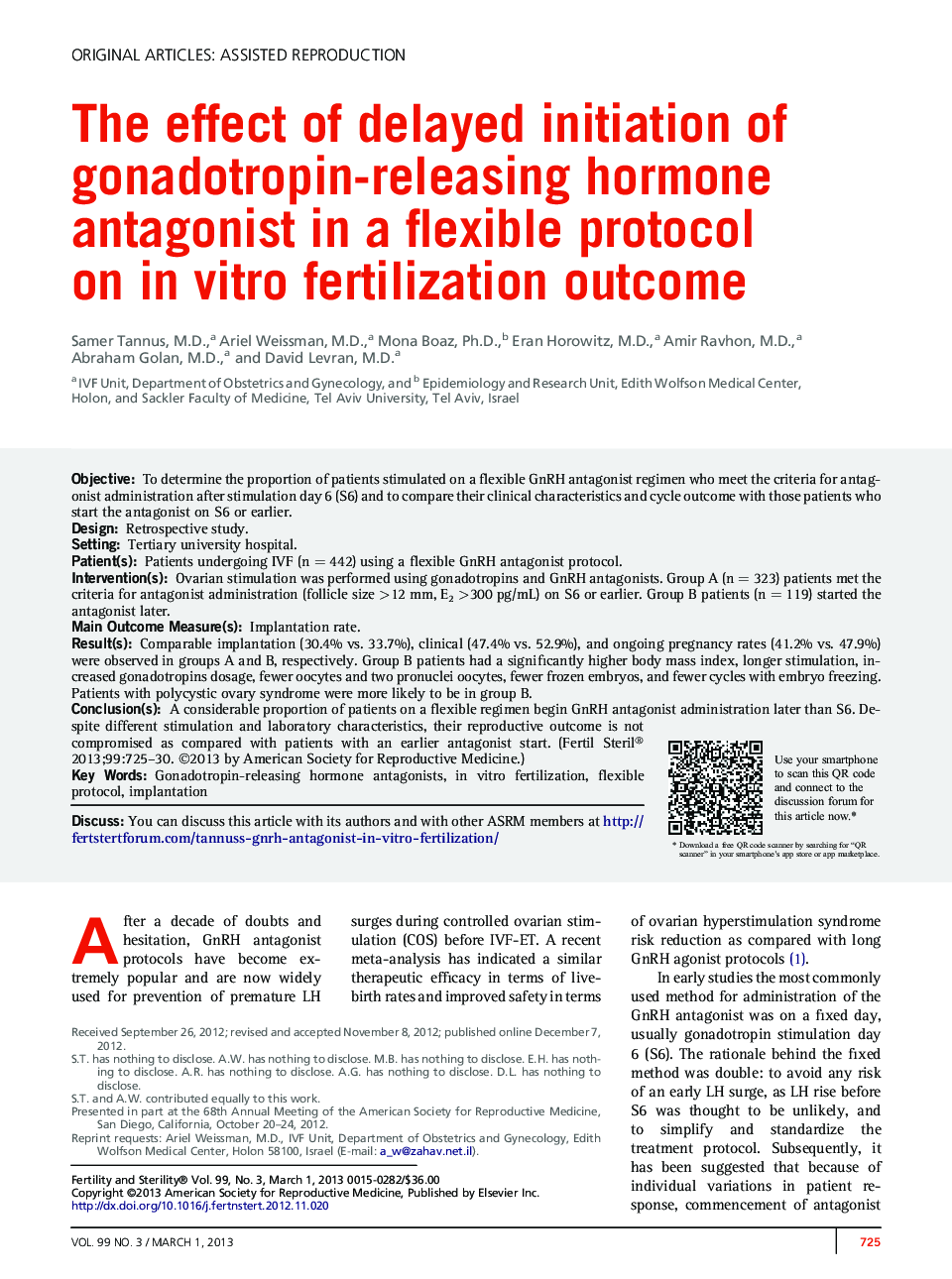| Article ID | Journal | Published Year | Pages | File Type |
|---|---|---|---|---|
| 3936795 | Fertility and Sterility | 2013 | 6 Pages |
ObjectiveTo determine the proportion of patients stimulated on a flexible GnRH antagonist regimen who meet the criteria for antagonist administration after stimulation day 6 (S6) and to compare their clinical characteristics and cycle outcome with those patients who start the antagonist on S6 or earlier.DesignRetrospective study.SettingTertiary university hospital.Patient(s)Patients undergoing IVF (n = 442) using a flexible GnRH antagonist protocol.Intervention(s)Ovarian stimulation was performed using gonadotropins and GnRH antagonists. Group A (n = 323) patients met the criteria for antagonist administration (follicle size >12 mm, E2 >300 pg/mL) on S6 or earlier. Group B patients (n = 119) started the antagonist later.Main Outcome Measure(s)Implantation rate.Result(s)Comparable implantation (30.4% vs. 33.7%), clinical (47.4% vs. 52.9%), and ongoing pregnancy rates (41.2% vs. 47.9%) were observed in groups A and B, respectively. Group B patients had a significantly higher body mass index, longer stimulation, increased gonadotropins dosage, fewer oocytes and two pronuclei oocytes, fewer frozen embryos, and fewer cycles with embryo freezing. Patients with polycystic ovary syndrome were more likely to be in group B.Conclusion(s)A considerable proportion of patients on a flexible regimen begin GnRH antagonist administration later than S6. Despite different stimulation and laboratory characteristics, their reproductive outcome is not compromised as compared with patients with an earlier antagonist start.
